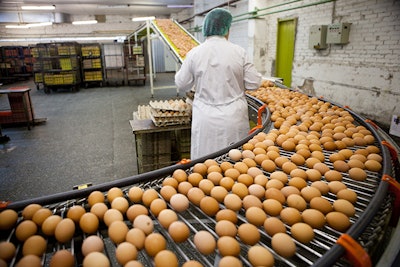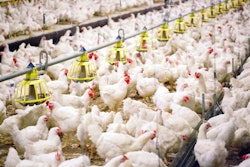
A light-based approach to food sanitation could be an effective alternative to chemical, heat and water-based decontamination technologies, especially when it comes to eggs, revealed a new study from Pennsylvania State University.
“Pulsed light is a non-chemical, non-ionizing technology,” said Dr. Josh Cassar, who led the research while he was a doctoral candidate in animal science at Pennsylvania State University and now works as a food safety consultant.
“It’s another option that the food industry could ultimately apply in a very dynamic multi-intervention-oriented process.”
The research was conducted in the lab of Dr. Ali Demirci, professor of agricultural and biological engineering in collaboration with Dr. Edward Mills, associate professor of meat science.
Targeted pulses of broad-spectrum light
According to the study published in the Journal of Food Engineering, the researchers applied targeted pulses of broad-spectrum light successfully targeted E. coli, Salmonella Typhimurium, Listeria monocytogenes, Bacillus cereus, Aspergillus niger spores and Penicillium roqueforti.
Additional projects completed in Demirci’s lab evaluated pulsed light to a range of foods, including fruits, seeds, grains, cheese, milk, apple juice, multiple protein products and eggs.
“There are some hurdles and limitations to light-based technologies. For example, poultry meat is a complex surface, so it is difficult to get a really efficient microbial reduction,” Cassar said.
“However, pulsed light technology served as an effective surface decontamination tool for food contact surfaces and the surface of shell eggs,” he added.
“Ultimately, a smooth product surface allows for efficient delivery of light resulting in effective antimicrobial reduction,” explained Cassar.
Ultraviolet radiation
In addition, the research showed that ultraviolet radiation played a crucial role in the technologies effectiveness.
Low-intensity ultra-violet (UV) light has been used as an antimicrobial treatment since the 1960s, however this approach requires a prolonged exposure period to be effective.
The novel technology delivers intense pulsed light – which provides more power quickly – to food items that pass by on a conveyer belt.
“The technology has real merit for the food industry. The only hurdle is the commercialization and industry investment to bring it to market,” Cassar said.
The project received support from the U.S. Department of Agriculture (USDA) National Institute of Food and Agriculture (NIFA) Federal Appropriations and Xenon Corporation.

















